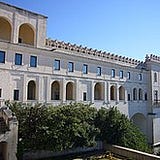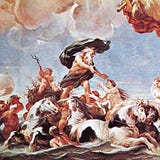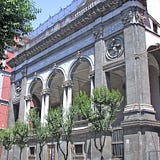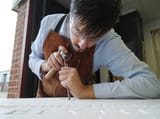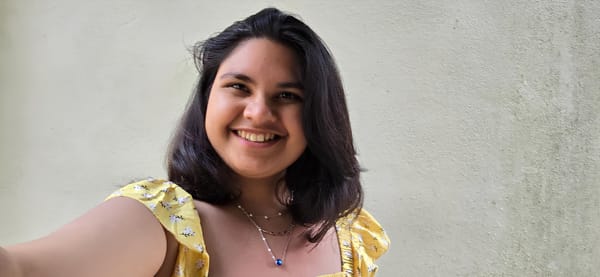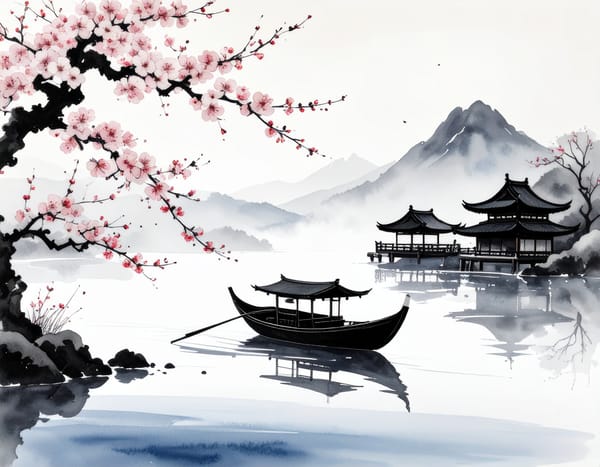Rich monks of Naples
A monastery in the highest spot of Naples hiding: Sculptures, Frescoes, Paintings and treasures. This place has got all for us to review!
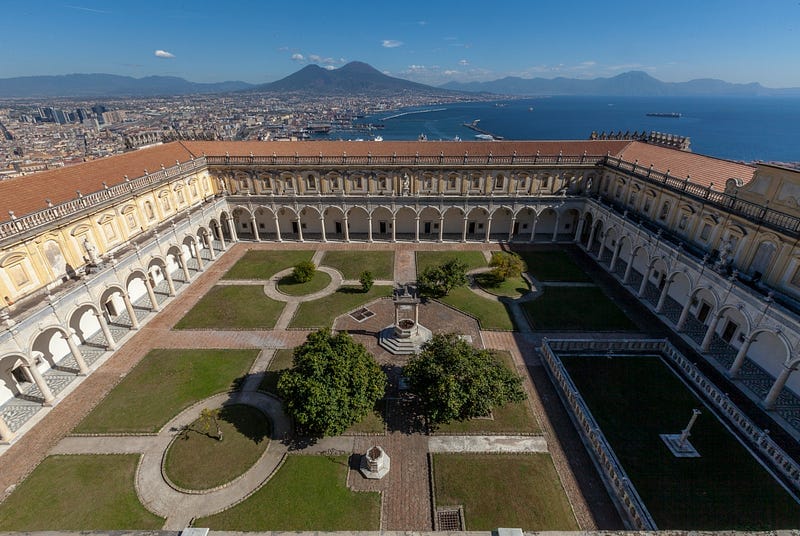
The Certosa of San Martino is a monastery in the highest spot of Naples hiding: Sculptures, Frescoes, Paintings and treasures. Let’s dive in together!
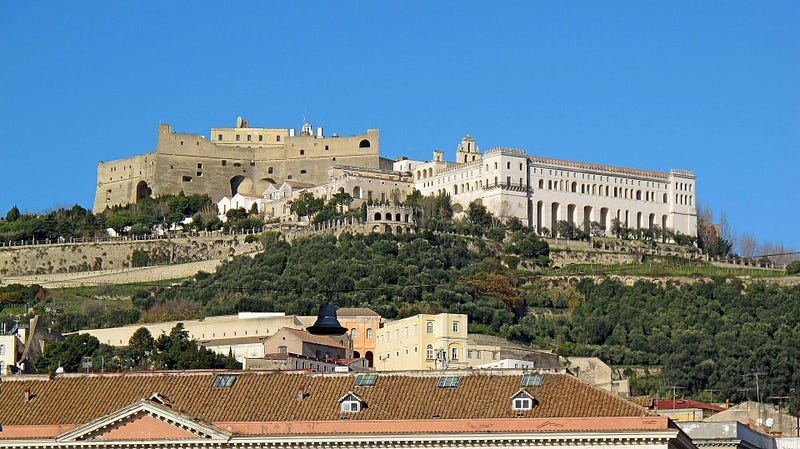
First things first, what is a Certosa? It’s the Italian name for “charterhouse”, a monastery of Carthusian monks. The English word is derived by phono-semantic matching from the French word chartreuse and it is therefore sometimes misunderstood to indicate that the houses were created by charter, a grant of legal rights by a high authority.
This Certosa was built in the highest and most panoramic location of Naples, it’s now a residential district but back then was a remote location and yes, you needed a ton of money to get artists up there.
History and Planning
The original plan was executed in 1321 by the Senese Architect and Sculptor Tino da Camaino (see other article here about his work in San Lorenzo Maggiore).
Thereafter, in the following 5 centuries, the location has been subject to constant renewal and expansion under Giovanni Antonio Dosio (1581) and Giovan Giacomo di Conforto.
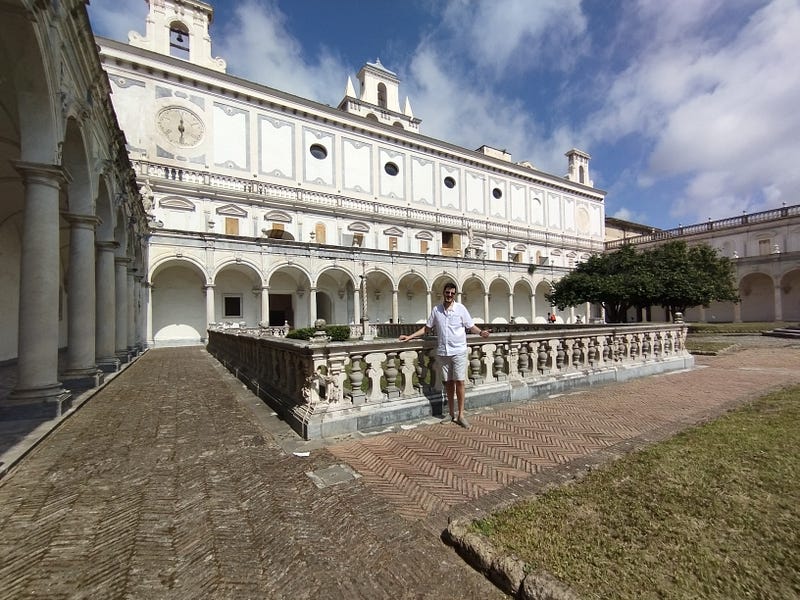
In 1623 starts the collaboration with the architect Cosimo Fanzago until 1656. Fanzago’s work is characterized by an extraordinary decorative activity, transforming the traditional geometric decorations into devices composed of foliage, fruit, stylized scrolls, to which the chromatic and volumetric effects give a character of exceptional realism and sensuality.
After receiving some damage during the revolution of 1799, the order (suspected of being filo-republican) gets reintegrated.
Finally, After the religious Orders were suppressed and it became state property, the Certosa was destined in 1866 as a museum by the will of Giuseppe Fiorelli, annexed to the National Museum as a detached section and opened to the public in 1867.
Now done with the History bit, let’s dive into the place itself!
The Cloister
Let’s start with this iconic section of the complex, it’s a common area and the centre of activity of every monk’s life.
Here, over the initial 14th-century structure, at the end of the 16th century, the Tuscan architect Giovanni Antonio Dosio (see above) designed the actual cloister in Renaissance shapes, significant for the rhythmical articulation of the arches above simple white columns.
In the first decades of the 17th century, Cosimo Fanzago enriched Dosio’s uniform structure with Baroque traces. He decorated the doors with volute cornices, mouldings and vegetal garlands of magnificent sculptural quality and added at the top, vibrant busts of Saints related to the Order (see below an image).
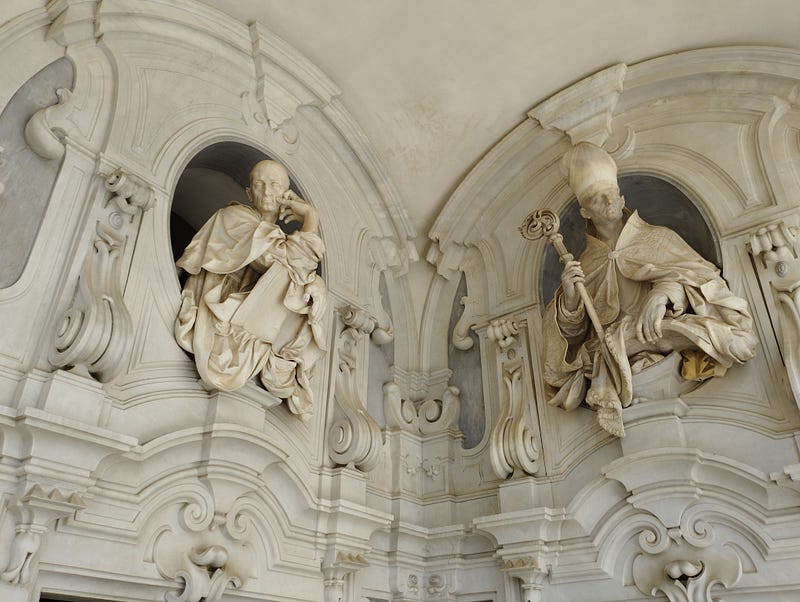
The church
Façade and Pronao
The façade of the fourteenth-century church was remodelled first at the end of the sixteenth century by Dosio.
He readapted the pronaos ( outer entrance) from five to three arches obtaining two chapels in the counter-façade of the church (a big job!) : the one of the Rosary and of San Giuseppe.
Then subsequently, Cosimo Fanzago built in the first half of the seventeenth century a “Serliana” (Venetian window) to mask the previous facade; the upper part and the side walls are instead the work of Nicola Tagliacozzi Canale.
A work that would make sweat any constructor today!
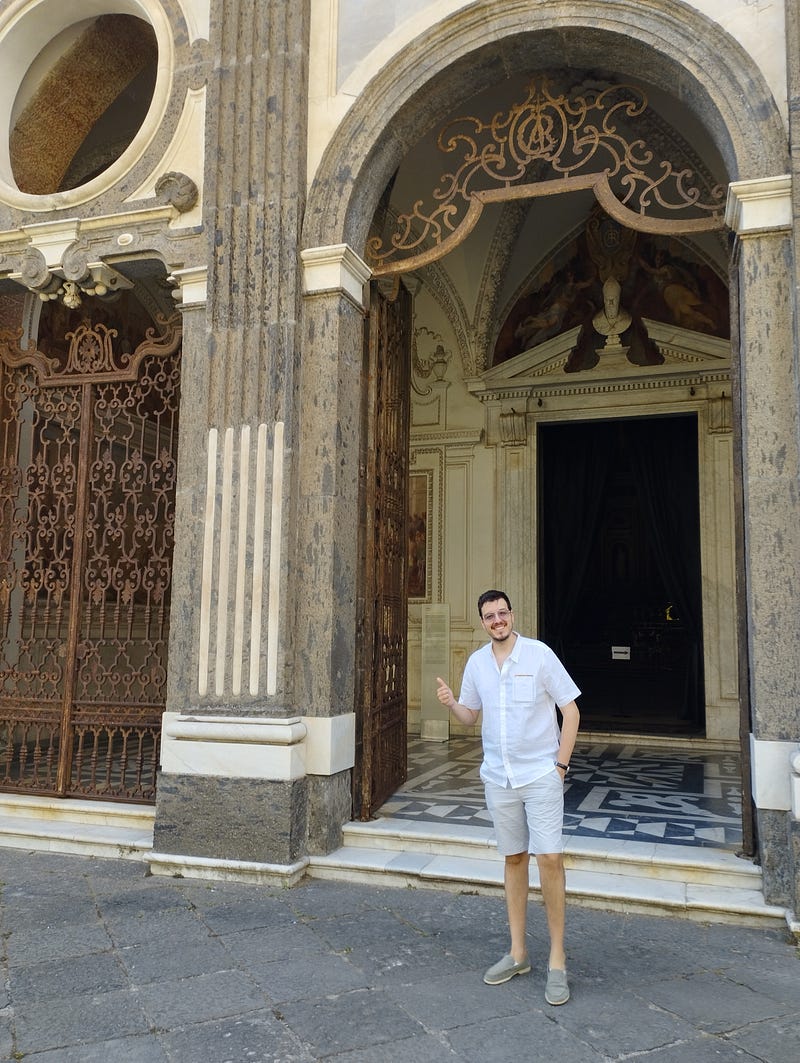
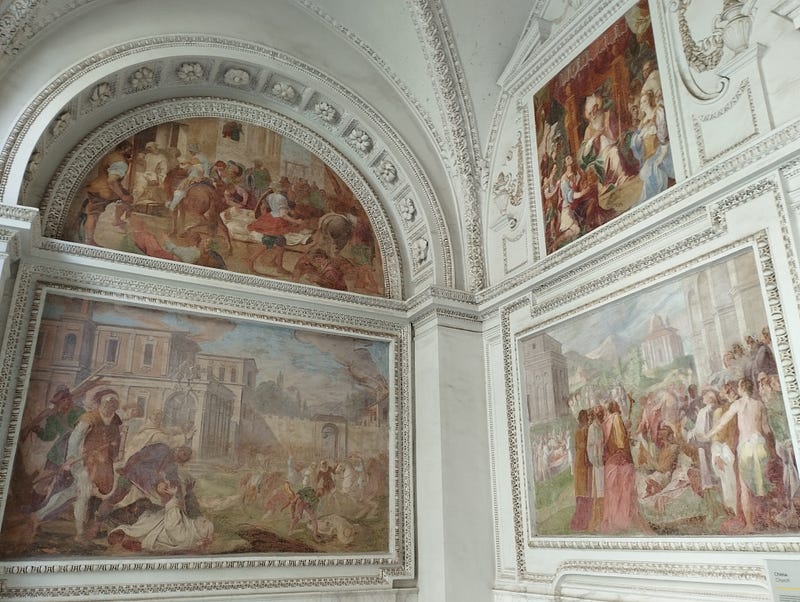
Naves and side chapels
The church consists of a single nave with eight side chapels and other rooms (a sacristy, a choir, a refectory, a chapter house and several chapels), which follow one another on the sides of the apse area.
As a whole, it presents a level of internal decoration, both pictorial and sculptural, at the turn of the 16th and 18th centuries which makes it one of the most important in the city.
The internal marble and plastic executions are mainly the result of the work of Cosimo Fanzago, who was called (as mentioned earlier) to renovate the charterhouse from 1623 to 1656, also dealing in this circumstance with redoing the external facade of the church.
Now, remember the two chapels gained by modifying the entrance arches?
As soon as you pass them, on the left, lay your eyes on the first chapel, the one of San Gennaro to look at this beauty.
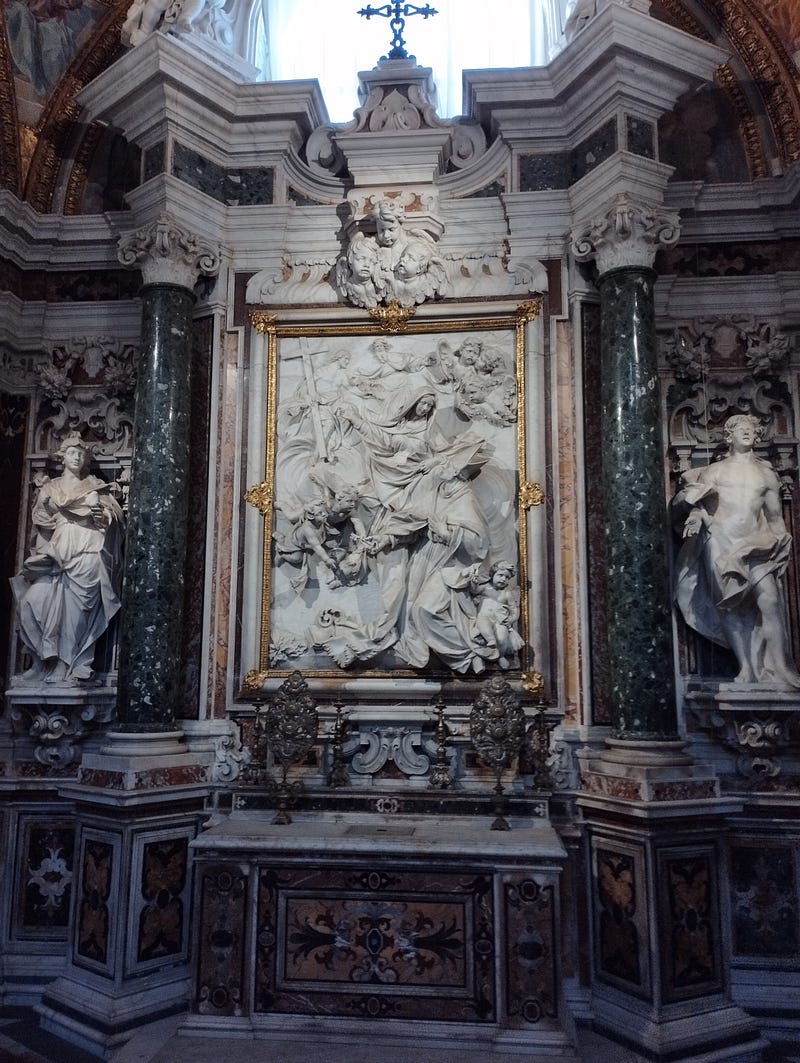
This is in the chapel of S. Gennaro, the saint of the city, part of the 6 on the inside of the church.
The chapels are in total 8 including the ones made at the counter-façade.
Each one of them has sculptures like the one above and I invite you to visit them all, it’s a sensory overload for the eyes!
Frescoes paintings at the top are present too in each chapel like this one below.
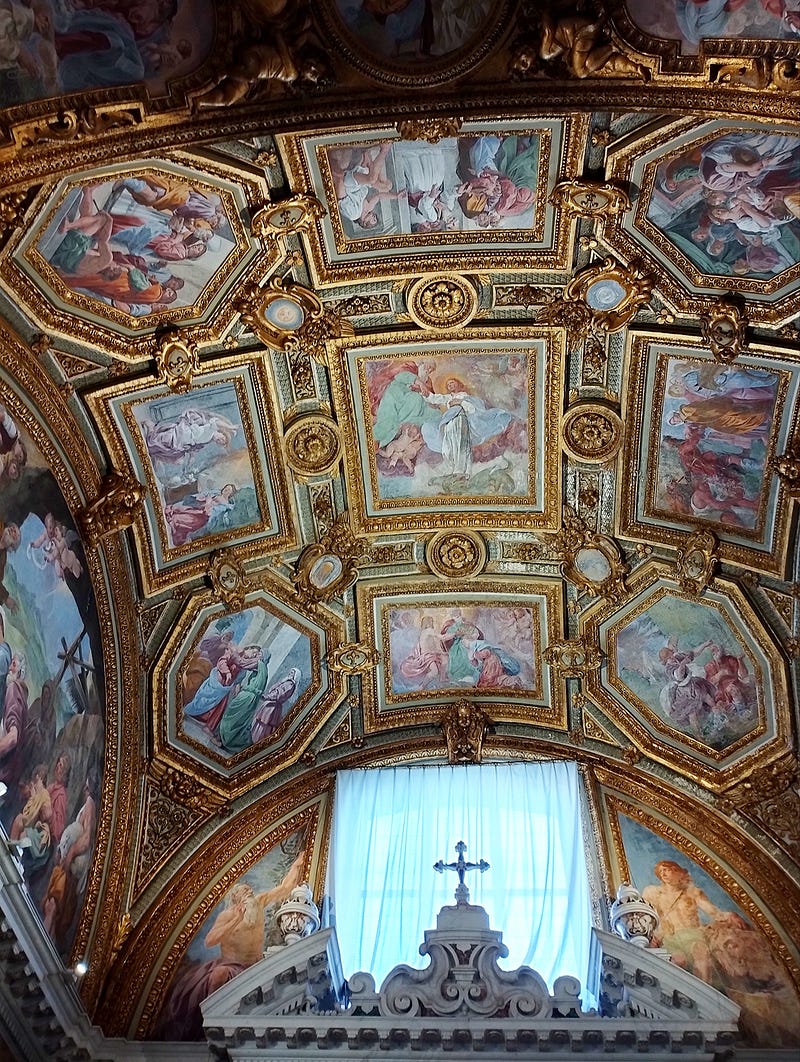
These paintings belong to the Chapel of Assumption and represent “stories of the Virgin Mary” made in 1626 by Battistello Caracciolo.
Pay close attention not only to the painting but also to the intricate gold gilded decorations, they take as much time as the painting itself!
The vault
The main vault of the church is enriched by a pictorial cycle which masks the cross structures of the roof (what a neat trick!).
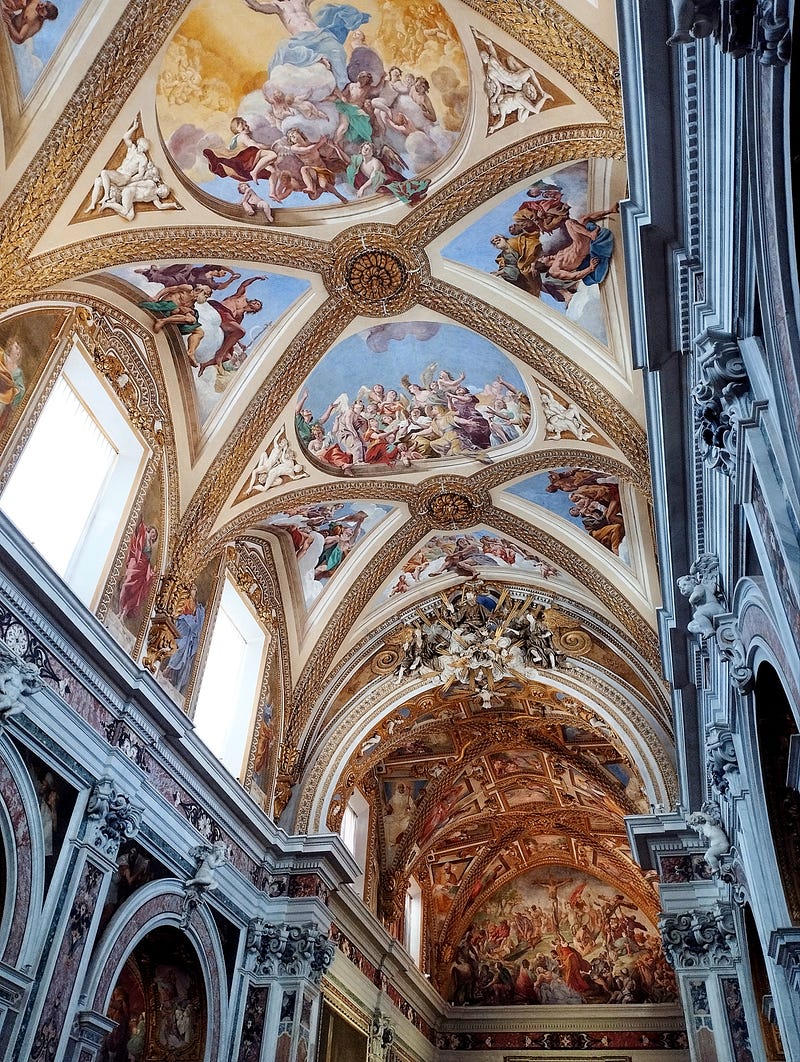
The frescoes were completed between 1636 and 1639 and constitute one of the most important and precious works of the Emilian painter Giovanni Lanfranco, who intended to resume the scenes of the Ascension of Christ with angels and blessed and Apostles in the lateral segments of the windows.
Sacristy and treasure chapel
At the back of the church, behind the apsidal section, a small door takes you to the sacristy. This one is decorated with frescoes and acts as a decoration to take you to the “treasure room”, just at the end of the corridor.
Is it just me or it reminds of the Gallery of Maps in the Vatican?
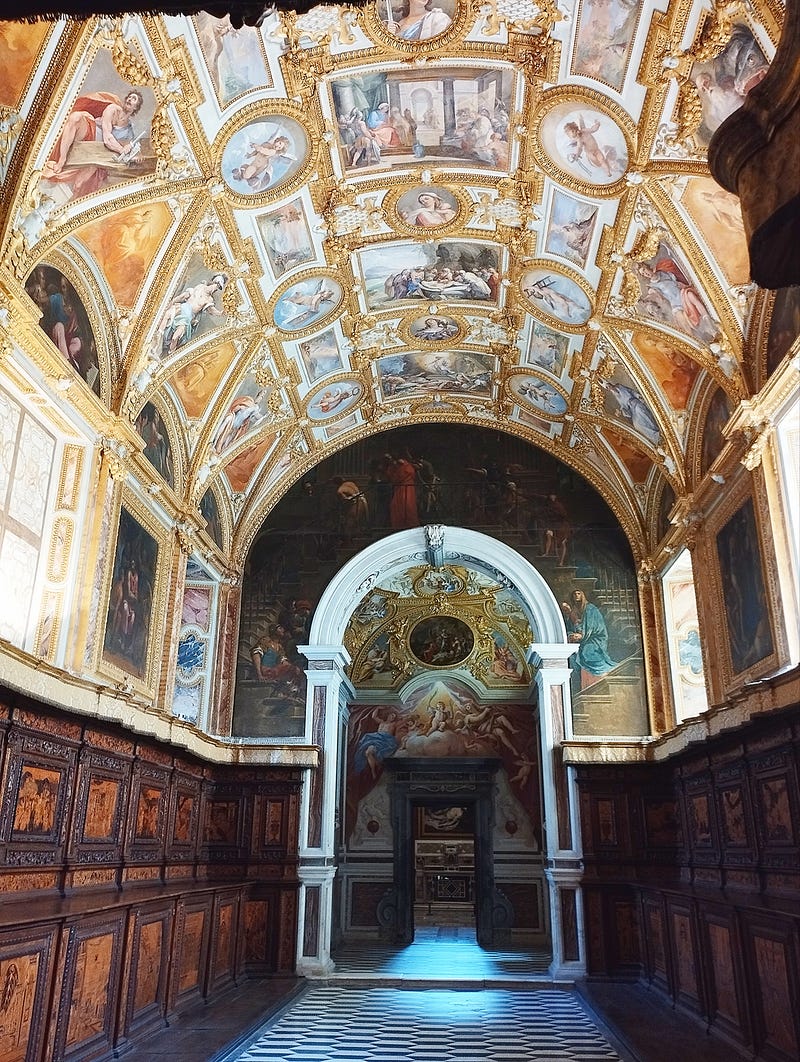
These paintings were made to represent: Stories from the Passion of Christ, Virtues, Putti with symbols of the Passion, Stories from the Old Testament, Allegories of virtues and Characters from the Holy Scriptures.
So here we are at the end in the treasure room.
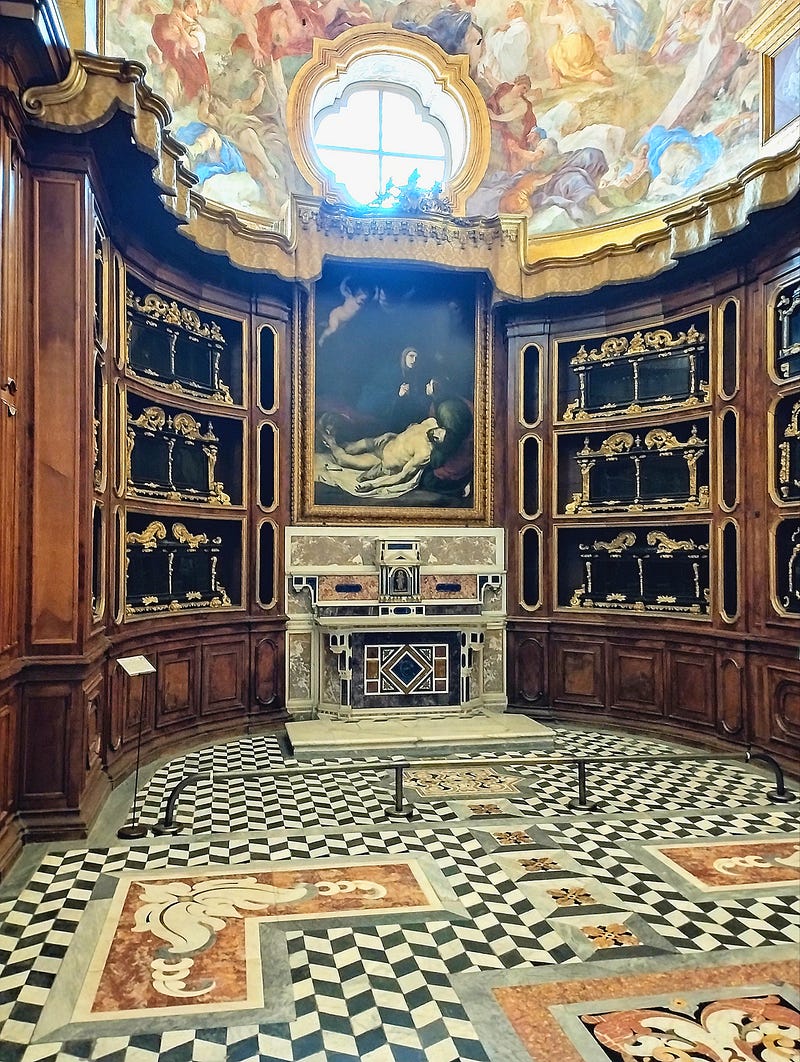
In addition to a marvellous Deposition of Christ (1626) by the Spanish painter Jusepe de Ribera, and the astonishing fresco painted by Luca Giordano (1703), depicting the Triumph of Judith, one can appreciate reliquaries, now empty, and enormous wooden wardrobes.
At this point it is necessary to make a precise distinction, starting from the name of this chapel, since the “treasure” for the Carthusian community of Naples was characterized by the multitude of relics which were arranged in reliquaries next to the altar, and which they jealously guarded.
But it must be said that there was a real material treasure, crammed into the gigantic wardrobes arranged on the walls of the chapel.
This was previously kept in the wardrobes of the adjacent chapel of the old treasure, which became unsuitable and insufficient in the 18th century to contain the immense amount of precious. It was the result of donations, bequests and gifts made by royalty and nobles.
Refectory and conclusion
Dear reader we are approaching the end of our tour, and I’ve decided to conclude with the refectory, a room used for communal meals in a religious institution like this one.
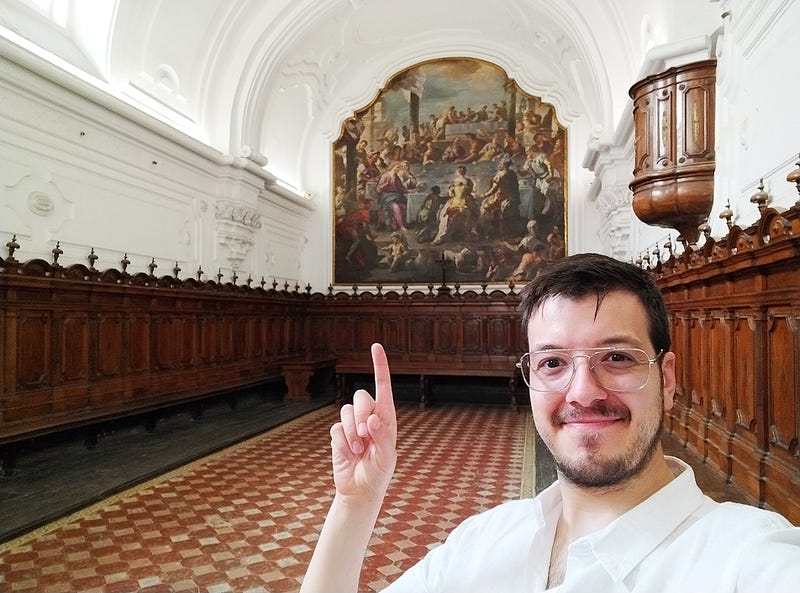
The refectory belongs to the eighteenth-century additions that affected the Carthusian complex and was used by the monks as a meeting place on the occasion of religious festivals, thus interrupting their status as “isolated”.
The architecture of the vast room is due to Nicola Tagliacozzi Canale (mentioned above for the Church façade) , who completed its construction in 1724.
On the back wall, there is a large canvas by Nicola Malinconico depicting The Wedding at Cana (1724), while 18th-century furniture is placed along the side walls.
The terracotta and majolica floor also dates back to the same century, to which the armchair for religious functions located on the counter-façade also belongs and which comes from the deposits of the church of Sant’Agostino alla Zecca.
These monks must have been rich as hell, as tilers today would charge you thousands of Euros or Pounds to do the same terracotta floor!
So here we are at the end of the tour, it was a hot summer day and pictures came nice and clear, hope you enjoyed them!
It’s important to note that there are other rooms to visit in this complex such as the 18th and 19th-century landscape painting paintings, the outdoor hanging gardens, underground tunnels and the Royal Coach of the Monarch.
I can’t fit it all in one article as time is short, and attention levels drop a bit after a long read, so as usual find some useful links if you want to read more ;)
P.S. Don’t forget to clap, read and subscribe, helps a lot!
See you next bye bye!
Useful links
